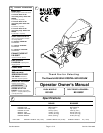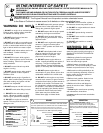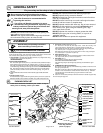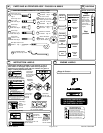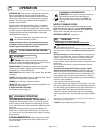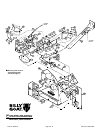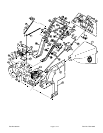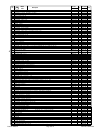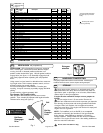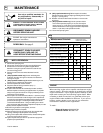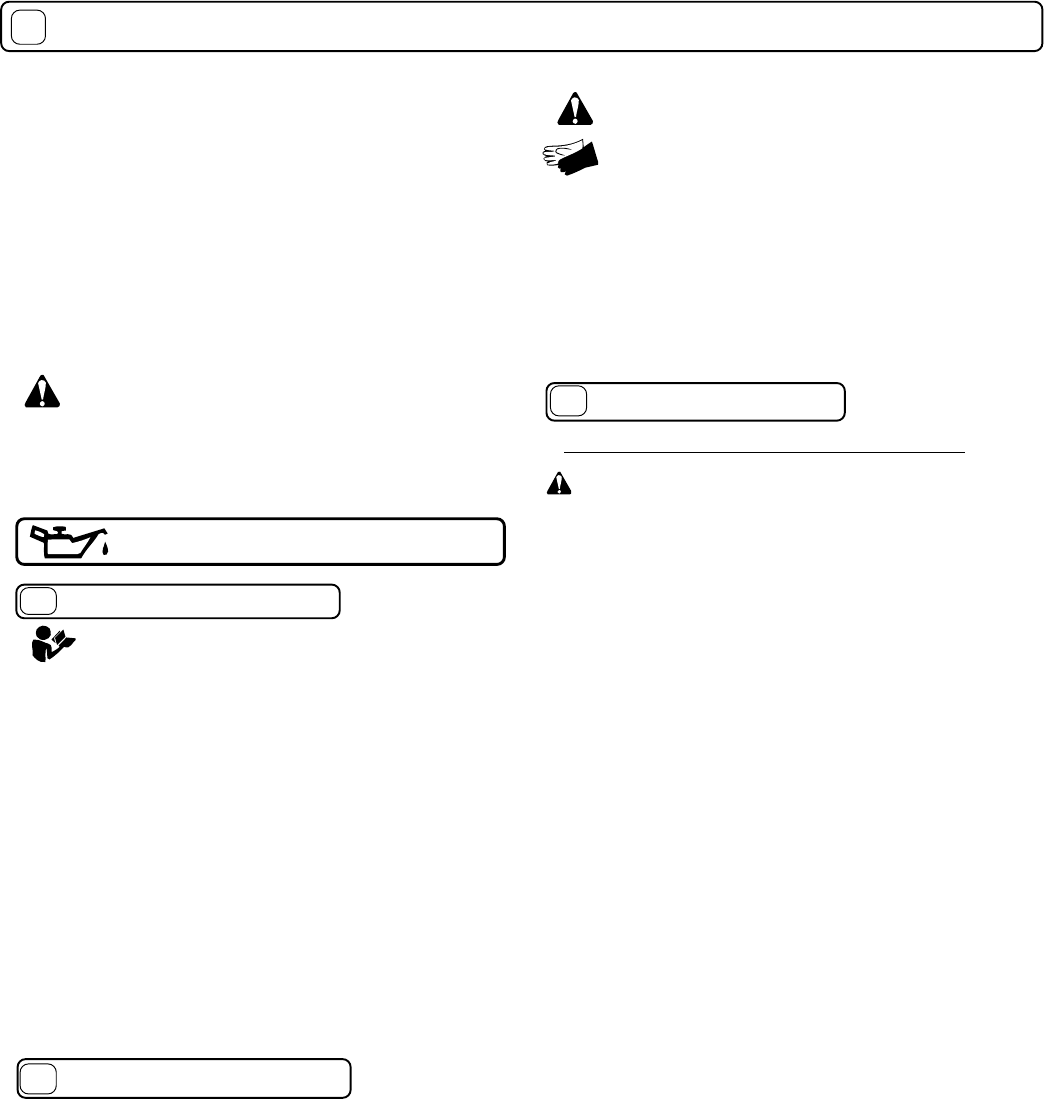
Part No. 800012 Form No. F021402A
Page 5 of 12
OPERATION
1616
1616
16
INTENDED USE: This machine is designed for vacuuming
leaves, grass clippings and other types of organic litter.
Debris mixed with cans, bottles and small amounts of sand
can be vacuumed; however, it is not this machine's primary
purpose. Vacuuming cans, bottles and sand will affect the
longevity of your machine.
VACUUM NOZZLE HEIGHT ADJUSTMENT: Is
adjusted by unlocking wing nut (item 13) and turning caster
knob. Turning the knob clockwise increases height. Be sure
the nozzle height is level (left to right) before tightening caster
wing nuts.
Adjust nozzle height according to surface conditions and
debris size; For vacuuming on flat surfaces, set nozzle 1/2"
(12.7 mm) to 5/8" (15.8 mm) above ground; Higher for uneven
terrain and turf.
FOR MAXIMUM PICKUP: Adjust nozzle close to debris,
but without blocking airflow into the nozzle.
NOTE
: Never bury
nozzle into debris.
VACUUMING OPERATION
Like all mechanical tools, reasonable care must
be used when operating machine.
Do not operate if excessive vibration occurs. If excessive
vibration occurs, shut engine off immediately and check for
damaged or worn impeller, loose impeller bolt, loose impeller
key, loose engine or lodged foreign objects. Note: See parts list
for proper impeller bolt torque specifications. (See trouble
shooting section on page 12).
Inspect machine work area and machine before operat-
ing. Make sure that all operators of this equipment are
trained in general machine use and safety.
PUT OIL IN ENGINE BEFORE STARTING.
16.116.1
16.116.1
16.1
STARTING
ENGINE: See engine manufacturer’s instructions
for type and amount of oil and gasoline used. Engine must be
level when checking and filling oil and gasoline.
ENGINE SPEED: Controlled by throttle lever on the handle.
Under normal conditions, operate at minimum throttle to
accomplish your current cleaning task.
FUEL VALVE: Move fuel valve to "ON" position (when provided
on engine).
CHOKE: Located at lower rear area of carburetor bowl. Choke
engine before starting when engine is cold.
PRIMER: Push primer per engine instructions.
THROTTLE: Move remote throttle control to fast position. Pull
starting rope to start engine.
IF YOUR UNIT FAILS TO START:
See Troubleshooting on page 12.
16.216.2
16.216.2
16.2
Note: Frequently empty debris to prevent bag overloading with
more weight than you can lift.
An optional bag and dust cover is available for use where debris will be
vacuumed in dusty conditions (see Optional Accessories shown on
page 1.)
DO NOT place bag on or near hot surface, such as engine. Run
engine at 1/2 throttle for first 1/2 hour to condition new bag. Your
new bag requires a break-in period to condition the pores of the
material against premature blockage. The entire bag surface
serves as a filter, and must be able to breath to have good vacuum
performance.
Be sure engine has come to a complete stop before removing
or emptying bag.
This vacuum is designed for picking up trash, organic
material and other similar debris
(see Safety Warnings page 2-3).
However, many vacuums are used where dust is mixed with
trash. Your unit can intermittently vacuum in dusty areas. Dust
is the greatest cause of lost vacuum performance. However,
following these rules will help maintain your machine's ability to
vacuum in dusty conditions:
• Run machine at idle to quarter throttle.
• The debris bag must be cleaned more frequently. A vacuum
with a clean, pillow soft bag will have good pickup performance.
One with a dirty, tight bag will have poor pickup performance. If
dirty, empty debris and vigorously shake bag free of dust.
• Machine or pressure-wash debris bag if normal cleaning
does not fully clean bag. Bag should be thoroughly dry before
use.
Having one or more spare debris bags is a good way to reduce down time
while dirty bags are being cleaned.
• DO NOT leave debris in bag while in storage.
DEBRIS BAG
Debris bags are normal replaceable wear items.
16.316.3
16.316.3
16.3
CLEARING A CLOGGED NOZZLE
& EXHAUST: Turn engine off and wait for impeller to
stop completely and disconnect spark plug wire.
Wearing durable gloves, remove clog. Danger, the
clog may contain sharp materials. Reconnect spark
plug wire.
NOZZLE GOBBLER DOOR.
Large debris can be vacuumed without readjusting nozzle
height by temporarily opening the remote Nozzle Gobbler
Door. For maximum pickup of small debris, the gobbler door
must be down, flush with front face of nozzle.
OPTIONAL HOSE KIT (see page 1).



